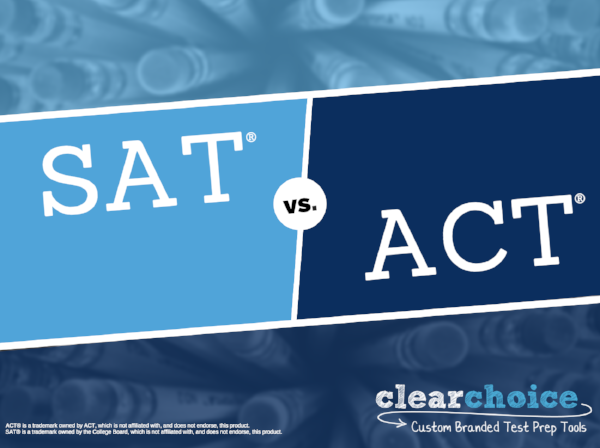Maximize SAT® Score Improvements by Tapering Your Tutoring
Updated on May 11, 2023
Preparing for a standardized test is a lot like preparing for a marathon. In both cases, consistency, stamina training, and even diet are critical to maximizing performance. There are, however, a few critical differences that tutors should keep in mind when helping students prepare for test day. A few of them may surprise you.
How Long Does It Take to Run a Marathon?
This is a trickier question than it first appears.
Keep in mind that we're not asking how long is a marathon? That's obvious: 26.2 miles.
The question is how long does it take to run a marathon? And the totally correct, but mostly useless, answer is:"Running a marathon takes exactly as long as it takes a runner to run 26.2 miles."
How Long Does It Take to Complete an Official SAT® Test?
This question isn't as tricky as the one about the marathon.
The reason is simple: an SAT® test is both a defined distance and a defined duration.
So, how long is the SAT ®test? If you're talking about the structure of the test, then the answer looks something like this:
source: Clear Choice Test Prep's FREE Ebook: SAT® vs. ACT®
But what if you're asking how long does it take to complete an SAT ®Test? Well, then the best answer would look something more like this:
Whatever the precise question you set out to answer, you should always use the opportunity to tell your students that the SAT® and ACT® are very long tests. It's important that you help your students develop test-taking stamina.
And the only way to develop that stamina is to sit down for long, uninterrupted stretches of time to complete real SAT® tests and real ACT® tests under timed conditions. There is no substitute for this essential element of effective test prep.
The Importance of Tapering Your Training
There is no substitute for taking official SAT® and ACT® practice tests. If you're serious about helping your students improve their test scores, then you quite simply must schedule a number of full-length practice SAT® tests or ACT® tests for your students. Speaking of scheduling the tests, you should plan ahead to make sure your students aren't taking a full-length test the afternoon before their official SAT® Test Day.
To illustrate this point, let's look back at the topic we brought up earlier: long distance running. In fact, let's consider the parallels between preparing for a half-marathon and preparing for the SAT®/ACT® test.
Different experts have different approaches to preparing for a race, but generally they agree on the importance of tapering your training in the week before the actual race. Consider the chart below:
source: http://bit.ly/2ysTNFz
The important thing to notice is that according to this training schedule, a runner should significantly decrease the amount of training that he or she is doing during weeks 11 and 12. In fact, the distances run in weeks 11 and 12 (not counting the actual half-marathon) are shorter than any week since week 5.
Again, trainers may not agree on this specific schedule, but they will agree with the principle of tapering your training in advance of the big event. A runner's body needs time to recover from the rigors of training. This allows you to perform at your best during the actual race. Test prep works best when you employ a similar strategy.
Train Smarter, Not Harder In Advance of the Official Test Day
The final week before the test, students should focus more than ever on quality over quantity. Now is NOT the time to focus on long-term gains. That time has passed. Now is the time to make sure that you're 100% ready execute the strategies and concepts you've already covered.
This means adjusting the format of the tutoring (and independent review) to focus on reviewing concepts you've already covered. Now is not the time to tackle new material. More importantly, the time for studying long hours has passed. Instead, students should:
General Strategy
Review problems on old tests as though they were flash-cards:
Do not spend the time actually solving test questions
On the Reading Section:
Evaluate the answer choices to see if there are any obvious trap answer
Consider where in the passage you would look for evidence to support your answer
Identify the specific strategy you would use to solve that question
Identify the question type
Carefully read each question, making sure you understand the question.
On the Writing Section:
Review the full list of commonly occurring grammatical errors
Read the passage to identify what concept is being tested
Analyze the structure of the answer choices to identify the concept being tested
On the Math Section , review the Basic Math Strategies
Review Basic Math Strategies
Pick Your Own Numbers
Work Backwards
Review the important math formulas
Walk through each math question
Carefully read the problem and mark it up (if it isn't already)
Make sure you understand what you're being asked to find
Identity the information you're given
Identify the information you'll need to find in order to solve the problem
Practice Making a Determination:
If this were test day, would you proceed to solve or skip this problem?
On the Essay Section:
Read and mark up as many essay prompts as you can get your hands on
General Preparation:
Download your free copy of the Illustrated Test Day Checklist for SAT® & ACT® Students
Get to bed early
Print your admission ticket and pack all your supplies for test day no later than the day before
Focused, Prepared, and Well Rested
If you follow the steps we've laid out above, your students will be better prepared to show up and take the test in the right frame of mind.
Download your copy of the SAT® vs. ACT® Ebook
Clear Choice Test Prep provides test-prep curriculum for independent tutors and tutoring companies. We help small tutoring businesses grow by improving results, generating more leads, and impressing test-prep clients. To learn more about how Clear Choice Test Prep can help you better serve the needs of your test-prep clients, give us a call today.
Oh, and sign up for our blog to make sure you don't miss out on any of our valuable resources for test-prep tutors!






